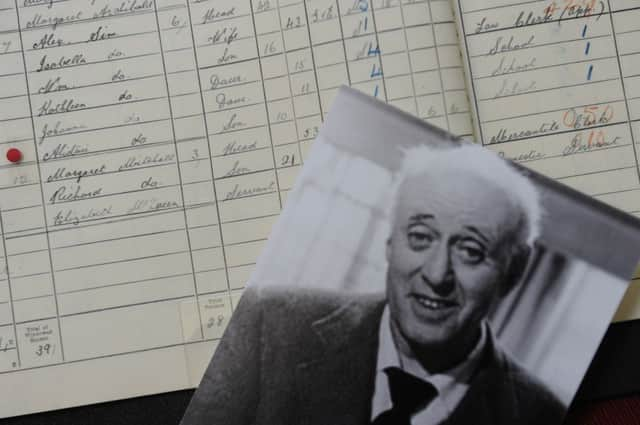Birth, marriage and death records to go online


Almost 222,000 images of birth records from 1913, marriages from 1938 and deaths from 1963 will be available to researchers from January 1.
They highlight the way Scotland’s population has changed over the past century, growing from 4.73 million in 1913 to 5.31 million in 2012.
Advertisement
Hide AdIn 1913 there were 120,516 births compared to 58,027 births last year.
They also show how the popularity of baby names has changed over the past 100 years.
While Sophie and Jack are top of the list today, with 580 girls and more than 500 boys registered with the names in 2012, in 1913 there were only three of each.
That year the most popular names for baby girls were Mary, Annie and Agnes, and John, James, Robert and William for boys.
The average age for marriage has also risen significantly since 1938, when it was 26.7 for women and 29.7 for men. In 2012, the average age for women was 34.8 and for men was 37.2 and there were 30,534 marriages.
There were 38,716 marriages in 1938, including that between German circus performer and lion tamer Alfred Kaden, then 35, and Vera Husing (nue Ludtke), 25, the poet daughter of a German landowner.
Advertisement
Hide AdThe records include entries for 65,521 deaths in 1963 compared to 54,937 in 2012.
Life expectancy
The life expectancy of Scots has risen during the last 50 years, reflected in the increase in centenarians.
Advertisement
Hide AdWhile 28 people died at or over the age of 100 in 1963, in 2012 it was 389.
Tim Ellis, registrar general and keeper of the records of Scotland, said: “The records that National Records of Scotland holds are crammed full of fascinating stories about Scotland’s people and history, and I know that people will find the latest additions to our online resources very useful for family history and other research.
“If someone out there recognises the story of the lion-tamer and the poet, we would delighted to learn what became of them.”
The new images will be available on the ScotlandsPeople website (www.scotlandspeople.gov.uk), at the ScotlandsPeople Centre in Edinburgh, and at local family history centres in Glasgow, Kilmarnock, Hawick and Inverness.
Culture Secretary Fiona Hyslop said: “These new images, and the stories they tell about Scotland’s history, demonstrate the rich variety of information we have in our records.
“The new images of records being made available to the public from tomorrow represent a new chapter of Scotland’s story now available to the public.
Advertisement
Hide Ad“I’d encourage anyone who is interested in finding out more about their local history or family background to have a look at the wealth of records now available as part of our wonderful online resources.”
SEE ALSO: